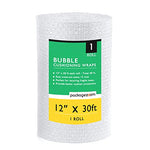You have no items in your shopping cart.
Construction sites are bustling hubs of activity, where progress and development shape the landscape. However, amidst the chaos and excitement, it's crucial not to overlook the significance of construction site clean up. An organized and efficient clean-up process not only ensures a safe and compliant working environment but also contributes to a positive project outcome.
In this article, we will delve into the realm of construction site clean up, exploring best practices, essential steps, and expert recommendations. Whether you're a construction professional, project manager, or simply curious about the subject, join us as we navigate through the key aspects of this crucial undertaking.
Construction Site Clean Up
Construction site clean up encompasses a range of activities aimed at maintaining cleanliness, order, and safety on the site. It involves the removal of debris, controlling dust and dirt, ensuring hazard-free surroundings, and addressing environmental concerns. By prioritizing clean up, construction professionals can enhance productivity, minimize risks, and adhere to regulatory requirements.
Efficient construction site clean up is a multi-faceted endeavor, requiring careful planning, effective execution, and continuous monitoring. By implementing the right strategies, utilizing appropriate tools, and leveraging professional services when necessary, you can streamline the clean-up process and set the stage for success.
FAQs
FAQ 1: Why is construction site clean up important?
Construction site clean up holds immense importance due to various reasons:
- Safety: A clean and organized site reduces the risk of accidents and injuries.
- Compliance: Clean-up practices align with regulatory requirements and environmental standards.
- Productivity: A clutter-free environment enhances productivity and efficiency.
- Positive Image: A well-maintained site reflects professionalism and fosters positive impressions.
FAQ 2: What steps are involved in developing a clean-up plan?
Developing a comprehensive clean-up plan involves the following steps:
- Assess the Site: Identify areas requiring clean up and potential hazards.
- Determine Clean-Up Frequency: Define the frequency and intervals for clean-up activities.
- Allocate Resources: Ensure availability of manpower, equipment, and cleaning supplies.
- Establish Protocols: Establish protocols for sorting debris, managing hazardous materials, and dust control.
- Monitor and Review: Regularly evaluate the effectiveness of the plan and make necessary adjustments.
FAQ 3: How can I dispose of construction debris responsibly?
Responsible disposal of construction debris involves:
- Recycling: Sort and separate recyclable materials, such as wood, metal, and concrete.
- Reusing: Explore opportunities to repurpose certain materials on-site or donate them to charities.
- Donation: Collaborate with local organizations to donate usable items, reducing waste and supporting communities.
- Proper Disposal: For non-recyclable waste, consult local regulations and arrange for appropriate disposal methods.
FAQ 4: Are there any regulations regarding hazardous materials on construction sites?
Yes, regulations exist to govern the handling and storage of hazardous materials on construction sites. Compliance ensures worker safety and environmental protection. Familiarize yourself with relevant regulations, such as OSHA's Hazard Communication Standard (HCS), and establish protocols for proper storage, labeling, and disposal of hazardous substances.
FAQ 5: What are some effective measures for controlling dust on the site?
Controlling dust on construction sites involves several measures:
- Water Spraying: Regularly wetting dusty areas minimizes airborne particles.
- Dust Barriers: Erecting barriers like plastic sheeting or wind fences helps contain dust.
- Vacuum Systems: Employing vacuum systems during drilling or cutting operations reduces dust dispersion.
- Personal Protective Equipment (PPE): Provide workers with appropriate respiratory protection.
FAQ 6: When should I consider hiring professional cleaning services?
Consider hiring professional cleaning services when:
- The site is large-scale or complex, requiring specialized expertise.
- Time constraints necessitate dedicated cleaning resources.
- Compliance with specific regulations or certifications is mandatory.
- You seek to optimize efficiency and productivity by outsourcing non-core activities.
Conclusion
Construction site clean up is a critical component of any successful project. By incorporating effective strategies, adhering to regulations, and prioritizing cleanliness, you can ensure a safe, productive, and environmentally conscious work environment. From debris removal to dust control and beyond, investing time and effort into construction site clean up paves the way for success.
Remember, an organized and clean construction site is a testament to professionalism and sets the stage for smooth operations. Embrace the importance of construction site clean up, implement best practices, and witness the transformative impact it has on your projects.








